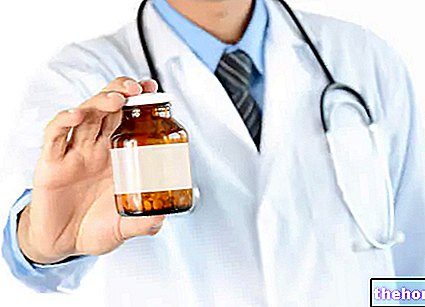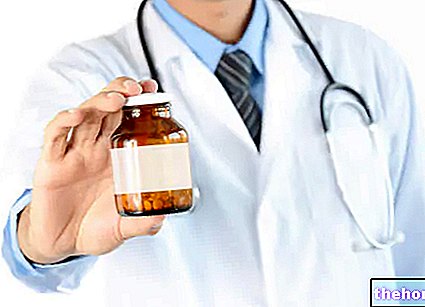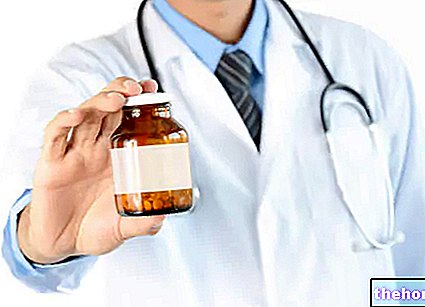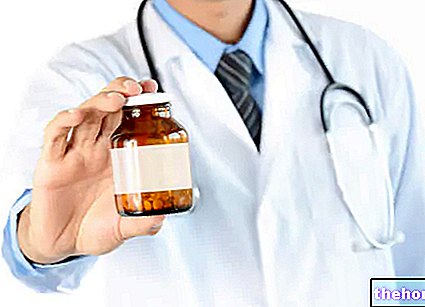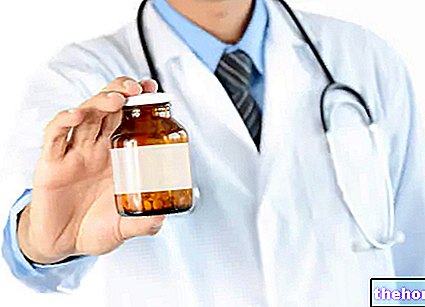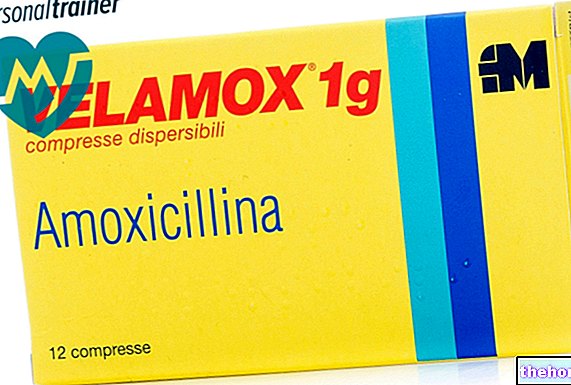Active ingredients: Metoprolol (metoprolol tartrate)
Seloken 100 mg tablets
Seloken package inserts are available for pack sizes:- Seloken 100 mg tablets
- Seloken 200 mg prolonged-release tablets
- Seloken 1 mg / ml solution for injection for intravenous use
Why is Seloken used? What is it for?
PHARMACOTHERAPEUTIC CATEGORY
Selective, unassociated beta-blockers.
THERAPEUTIC INDICATIONS
Treatment of arterial hypertension.
Treatment and prevention of angina pectoris.
Treatment of acute myocardial infarction.
Treatment of cardiac arrhythmias (excluding bradyarrhythmias).
Treatment of hyperthyroidism.
Contraindications When Seloken should not be used
- Hypersensitivity to the active substance, to other β-blocking drugs, and / or to any of the excipients;
- second or third degree atrioventricular block;
- heart failure in unstable decompensation (pulmonary edema, hypoperfusion or hypotension);
- patients on continuous or intermittent inotropic therapy with β-receptor agonists;
- clinically relevant sinus bradycardia;
- sick sinus syndrome (unless a permanent pacemaker has been implanted), sino-atrial block;
- cardiogenic shock;
- severe renal failure;
- severe peripheral arterial circulatory disorders;
- metabolic acidosis;
- untreated pheochromocytoma.
Metoprolol tartrate should not be administered to patients suspected of having acute myocardial infarction with a heart rate less than 45 beats per minute, a P-Q interval greater than 0.24 seconds, or systolic blood pressure less than 100 mm Hg.
Precautions for use What you need to know before taking Seloken
Patients treated with β-blockers should not be treated with intravenous calcium channel blockers verapamil.
In patients with asthma, as a rule, concomitant β2-agonist therapy (in tablets or inhalers) should be administered. When starting treatment with metoprolol the dosage of the β2-agonists may need to be adjusted (usually an increase).
During treatment with metoprolol, the risk of interference with carbohydrate metabolism or masked hypoglycaemia is lower than with non-selective β-blockers.
Patients with heart failure should be treated for heart failure both before and during treatment with metoprolol.
Very rarely, a pre-existing moderate degree of A-V conduction disturbance may worsen (leading to possible A-V block).
Should the patient's heart rate become slower, metoprolol should be administered at lower doses or discontinued gradually.
Metoprolol can aggravate symptoms related to diseases of the peripheral arterial circulation
Abrupt discontinuation of treatment should be avoided. If treatment is to be stopped, this should be done, where possible, gradually. In most patients, treatment can be stopped in 14 days. This can be done by gradually decreasing the daily dose until the final dose of 25 mg metoprolol once daily is reached.
During this period, especially patients with overt cardiac ischaemia should be kept under close surveillance. The risk of coronary events, including sudden death, may increase during discontinuation of β-blocker treatment.
If metoprolol is prescribed to patients with known pheochromocytoma, an alpha receptor blocker should be administered concomitantly.
Prior to surgery, the anesthetist should be informed that the patient is being treated with metoprolol. It is recommended that beta-blocker therapy not be discontinued prior to surgery.
Initiation of high dose treatment in patients undergoing non-cardiac surgery should be avoided as it has been associated with bradycardia, hypotension and heart attack with fatal outcome in patients with cardiovascular risk.
In patients treated with β-blockers, anaphylactic shock takes a more severe form.
Interactions Which drugs or foods can modify the effect of Seloken
Tell your doctor or pharmacist if you have recently taken any other medicines, even those without a prescription
Metoprolol is a metabolic substrate of the cytochrome P450 isoenzyme CYP2D6. Drugs that act as enzyme inducing or inhibiting substances may affect plasma levels of metoprolol. Plasma levels of metoprolol may increase with concomitant administration of compounds metabolised by CYP2D6, eg antiarrhythmics, antihistamines, histamine H2 receptor antagonists, antidepressants, antipsychotics and COX-2 inhibitors. The plasma concentration of metoprolol is reduced by rifampicin and can be increased by alcohol and hydralazine.
Patients on concomitant treatment with drugs that block sympathetic ganglia, with other β-blockers (e.g. eye drops) and with monoamine oxidase inhibitors (MAOIs), should be closely monitored.
Should concomitant treatment with clonidine be discontinued, it is necessary to discontinue treatment with β-blockers a few days before the discontinuation of clonidine itself.
When metoprolol is administered concomitantly with calcium channel blockers such as verapamil or diltiazem, increased negative inotropic and chronotropic effects may occur. Calcium channel blockers such as verapamil should not be administered intravenously in patients treated with β-blockers.
Beta-blockers may increase the negative inotropic and dromotropic effects of antiarrhythmic drugs (quinidine-like and amiodarone)
Digitalis glycosides, in association with β-blockers, can increase atrioventricular conduction time and can cause bradycardia.
In patients treated with β-blockers, inhaled anesthetics increase the cardiodepressive effect.
Concomitant treatment with indomethacin or other prostaglandin synthetase inhibitor drugs may lead to a decrease in the antihypertensive effect of β-blockers.
Under certain conditions, in which adrenaline is administered to patients treated with β-blockers, cardioselective β-blockers interfere much less on blood pressure control than non-cardioselective ones.
Dosage adjustment of oral antidiabetic agents may be required in patients treated with β-blockers.
Warnings It is important to know that:
Pregnancy and breastfeeding
Ask your doctor or pharmacist for advice before taking any medicine. Like most medications, metoprolol should not be given during pregnancy and lactation unless clearly necessary. Beta blockers, including metoprolol, can cause fetal harm, premature birth and miscarriage. Like all antihypertensive drugs, the Beta-blockers can cause side effects, such as bradycardia, in the fetus, newborn and infant.
The amount of metoprolol that passes into breast milk appears to be negligible to give beta-blockade in the newborn if the mother is treated at the normal recommended doses.
Effects on ability to drive and use machines
Patients should know their reaction to metoprolol before driving or operating machinery as dizziness or fatigue may occasionally occur.
The medicine contains lactose; if you have been told by your doctor that you have an intolerance to some sugars, contact your doctor before taking this medicinal product.
Important information about some of the ingredients
Seloken contains lactose. If you have been told by your doctor that you have an intolerance to some sugars, contact your doctor before taking this medicinal product.
For those who carry out sporting activities: the use of the drug without therapeutic necessity constitutes doping and can in any case determine positive anti-doping tests.
Dosage and method of use How to use Seloken: Dosage
Seloken tablets should be taken on an empty stomach
Hypertension
The recommended dose is 1-2 tablets a day, given as a single dose in the morning, or divided into two doses (morning and evening).
Acute myocardial infarction
The recommended dose is 2 tablets per day divided into 2 doses.
Cardiac arrhythmias (excluding bradyarrhythmias)
The recommended dose is 1-2 tablets per day divided into 2-3 administrations.
Hyperthyroidism
The recommended dose is 1.5-2 tablets per day divided into 3-4 administrations.
Patients with impaired renal function
No dosage adjustment is required for these patients.
Patients with impaired liver function
Dosage adjustment is not generally necessary in patients with liver cirrhosis as metoprolol is low in plasma protein binding (5-10%). If there are signs of very severe hepatic impairment (shunt patients), a reduction in dosage should be considered.
Senior citizens
No dosage adjustment is necessary in elderly patients.
Children
Experience of Seloken treatment in children is limited.
Overdose What to do if you have taken too much Seloken
Symptoms
Symptoms of overdose may include bradycardia and bradyarrhythmia, hypotension, heart failure, cardiac conduction disturbances, A-V block, cardiogenic shock, cardiac arrest, altered consciousness / coma, nausea, vomiting, cyanosis and bronchospasm.
Treatment
Treatment should be performed at a facility that can provide adequate supportive measures, close monitoring and supervision.
If justified, gastric lavage can be performed, and / or activated charcoal administered.
Treat bradycardia and cardiac conduction disorders with atropine, adrenal stimulating drugs, or pacemakers.
Treat hypotension, acute heart failure and shock, with appropriate expansion of blood volume, injection of glucagon (if necessary, followed by an intravenous infusion of glucagon), intravenous administration of adreno-stimulating drugs such as dobutamine, with drugs α1 receptor agonists, in addition, in the presence of vasodilation.
Intravenous administration of Ca2 + may also be considered.
Bronchospasm can usually be reversed by bronchodilators.
In case of accidental ingestion / intake of an excessive dose of Seloken, notify your doctor immediately or go to the nearest hospital.
If you have any questions about the use of Seloken, ask your doctor or pharmacist
Side Effects What are the side effects of Seloken
Like all medicines, Seloken can cause side effects, although not everybody gets them.
Metoprolol is well tolerated and side effects are usually mild and reversible. Adverse events that occurred during clinical trials or during routine use are listed below. In many cases, a relationship with metoprolol treatment has not been established.
The following definitions of frequency were used: very common (≥10%), common (1-9.9%), uncommon (0.1-0.9%), rare (0.01-0.09%) ) it's very rare (
Cardiac pathologies
Common: Bradycardia, orthostatic hypotension (very rarely with syncope), cold hands and feet, palpitations.
Uncommon: worsening of symptoms of heart failure, cardiogenic shock in patients with acute myocardial infarction *, first degree A-V block, precordial pain.
Rare: cardiac conduction disturbances, cardiac arrhythmias.
Very rare: gangrene in patients with severe pre-existing peripheral circulatory disorders.
Vascular pathologies
Uncommon: edema.
Very rare: gangrene in patients with severe pre-existing peripheral circulatory disorders.
* Frequency in excess of 0.4% compared to placebo in a study with 46,000 patients with acute myocardial infarction where the frequency of cardiogenic shock was 2.3% in the metoprolol group and 1.9% in the placebo group in the subpopulation of patients with low risk index for shock. The shock risk index is based on the absolute risk of shock in each individual patient resulting from age, sex, delay time, Killip class, blood pressure, heart rate, abnormalities in ECG and previous history of hypertension. The group of patients with low risk of shock corresponds to patients in whom the use of metoprolol is recommended in acute myocardial infarction.
Nervous system disorders
Very common: fatigue.
Common: dizziness, headache.
Uncommon: paraesthesia, muscle cramps
Very rare: taste disturbances.
Gastrointestinal disorders
Common: nausea, abdominal pain, diarrhea, constipation.
Uncommon: vomiting.
Rare: dry mouth.
Disorders of the blood and lymphatic system
Very rare: thrombocytopenia.
Hepatobiliary disorders
Rare: liver function test abnormalities.
Very rare: hepatitis.
Metabolism and nutrition disorders
Uncommon: weight gain.
Musculoskeletal and connective system disorders
Very rare: arthralgia.
Psychiatric disorders
Uncommon: depression, difficulty concentrating, drowsiness or insomnia, nightmares.
Rare: nervousness, anxiety, impotence / sexual dysfunction.
Very rare: amnesia / memory worsening, confusion, hallucinations.
Respiratory, thoracic and mediastinal disorders
Common: exertional dyspnea.
Uncommon: bronchospasm.
Rare: rhinitis.
Eye disorders
Rare: visual disturbances, dry or irritated eyes, conjunctivitis
Ear and labyrinth disorders
Very rare: tinnitus.
Skin and subcutaneous tissue disorders
Uncommon: rash (in the form of psoriasiform urticaria and dystrophic lesions of the skin), increased sweating.
Rare: hair loss.
Very rare: photosensitivity reactions, worsening of psoriasis.
Compliance with the instructions contained in the package leaflet reduces the risk of undesirable effects.
Reporting of side effects
If you get any side effects, talk to your doctor or pharmacist. This includes any possible side effects not listed in this leaflet. Side effects can also be reported directly via the national reporting system at https://www.aifa.gov.it/content/segnalazioni-reazioni-avverse. By reporting side effects you can help provide more information on safety of this medicine.
Expiry and Retention
Expiry: see the expiry date printed on the package
The expiry date refers to the product in intact packaging, correctly stored.
WARNING: do not use the medicine after the expiry date shown on the package
Store at a temperature not exceeding 25 ° C.
Medicines should not be disposed of via wastewater or household waste. Ask your pharmacist how to dispose of medicines you no longer use. This will help protect the environment.
Keep this medicine out of the sight and reach of children.
COMPOSITION
One 330 mg tablet contains:
active principle: metoprolol tartrate 100 mg .;
excipients: sodium carboxymethyl starch A; lactose; anhydrous colloidal silica; povidone; magnesium stearate; microcrystalline cellulose.
SELOKEN 100 mg tablet is white to off-white, circular, 10 mm in diameter, scored and debossed with "A / mE" on one side. The score line on the tablet is to facilitate breaking for easier swallowing and not to divide into equal doses.
PHARMACEUTICAL FORM AND CONTENT
Box of 50 tablets.
Source Package Leaflet: AIFA (Italian Medicines Agency). Content published in January 2016. The information present may not be up-to-date.
To have access to the most up-to-date version, it is advisable to access the AIFA (Italian Medicines Agency) website. Disclaimer and useful information.
01.0 NAME OF THE MEDICINAL PRODUCT
SELOKEN 100 MG TABLETS
02.0 QUALITATIVE AND QUANTITATIVE COMPOSITION
One 330 mg tablet contains: active ingredient: 100 mg metoprolol tartrate.
Excipients with known effects: each tablet contains 35 mg of lactose.
For the full list of excipients, see section 6.1
03.0 PHARMACEUTICAL FORM
Tablets.
SELOKEN 100 mg tablet is white to off-white, circular, 10 mm in diameter, scored and debossed with "A / mE" on one side. The score line on the tablet is to make it easier to break and swallow the tablet more easily and not to divide it into equal doses.
04.0 CLINICAL INFORMATION
04.1 Therapeutic indications
Treatment of arterial hypertension.
Treatment and prevention of angina pectoris.
Treatment of acute myocardial infarction.
Treatment of cardiac arrhythmias (excluding bradyarrhythmias).
Treatment of hyperthyroidism.
04.2 Posology and method of administration
Seloken tablets should be taken on an empty stomach.
Hypertension
The recommended dose is 1-2 tablets a day, given as a single dose in the morning, or divided into two doses (morning and evening).
Angina pectoris
The recommended dose is 1-3 tablets per day divided into 2-3 administrations.
Acute myocardial infarction
The recommended dose is 2 tablets per day divided into 2 doses.
Cardiac arrhythmias (excluding bradyarrhythmias)
The recommended dose is 1-2 tablets per day divided into 2-3 administrations.
Hyperthyroidism
The recommended dose is 1.5-2 tablets per day divided into 3-4 administrations.
Patients with impaired renal function
No dosage adjustment is required for these patients.
Patients with impaired liver function
Dosage adjustment is not generally necessary in patients with liver cirrhosis as metoprolol is low in plasma protein binding (5-10%). If there are signs of very severe hepatic impairment (shunt patients), a reduction in dosage should be considered.
Senior citizens
No dosage adjustment is necessary in elderly patients.
Children
Experience of Seloken treatment in children is limited.
04.3 Contraindications
• Hypersensitivity to the active substance, to other β-blocking drugs, and / or to any of the excipients;
• second or third degree atrioventricular block;
• heart failure in unstable decompensation (pulmonary edema, hypoperfusion or hypotension);
• patients on continuous or intermittent inotropic therapy with β-receptor agonists;
• clinically relevant sinus bradycardia;
• sick sinus syndrome (unless a permanent pacemaker has been implanted), sino-atrial block;
• cardiogenic shock;
• severe renal insufficiency;
• severe peripheral arterial circulatory disorders;
• metabolic acidosis;
• untreated pheochromocytoma.
Metoprolol tartrate should not be administered to patients suspected of having acute myocardial infarction with a heart rate of less than 45 beats per minute, a P-Q interval greater than 0.24 seconds, or a systolic blood pressure of less than 100 mmHg.
04.4 Special warnings and appropriate precautions for use
Patients being treated with β-blockers should not be treated with intravenous calcium channel blockers such as verapamil.
In patients with asthma, as a rule, concomitant β2-agonist therapy (in tablets or inhalers) should be administered. When starting treatment with metoprolol the dosage of the β2-agonists may need to be adjusted (usually an increase).
During treatment with metoprolol, the risk of interference with carbohydrate metabolism or masked hypoglycaemia is lower than with non-selective β-blockers.
Patients with heart failure should be treated for heart failure both before and during treatment with metoprolol. Very rarely, a pre-existing moderate degree of A-V conduction disturbance may worsen (leading to possible A-V block).
Should the patient's heart rate become slower, metoprolol should be given in lower doses or stopped gradually.
Metoprolol can aggravate symptoms related to diseases of the peripheral arterial circulation.
If metoprolol is prescribed to patients with known pheochromocytoma, an alpha receptor blocker should be administered concomitantly.
Abrupt discontinuation of treatment should be avoided. If treatment is to be stopped, this should be done, where possible, gradually. In most patients, treatment can be stopped in 14 days. This can be done by decreasing the daily dose gradually until the final dose of 25 mg of metoprolol once daily is reached.
During this period, especially patients with overt cardiac ischaemia should be kept under close surveillance. The risk of coronary events, including sudden death, may increase during discontinuation of β-blocker treatment.
Prior to surgery, the anesthetist should be informed that the patient is being treated with metoprolol. It is recommended that beta-blocker therapy not be discontinued prior to surgery.
Initiation of high dose treatment in patients undergoing non-cardiac surgery should be avoided as it has been associated with bradycardia, hypotension and heart attack with fatal outcome in patients with cardiovascular risk.
In patients treated with β-blockers, anaphylactic shock takes a more severe form.
The medicine contains lactose; Patients with rare hereditary problems of galactose intolerance, the Lapp lactase deficiency, or glucose-galactose malabsorption should not take this medicine.
04.5 Interactions with other medicinal products and other forms of interaction
Metoprolol is a metabolic substrate of the cytochrome P450 isoenzyme CYP2D6. Drugs that act as enzyme inducing or inhibiting substances may affect plasma levels of metoprolol. Plasma levels of metoprolol may increase with concomitant administration of compounds metabolised by CYP2D6, eg antiarrhythmics, antihistamines, histamine H2 receptor antagonists, antidepressants, antipsychotics and COX-2 inhibitors. The plasma concentration of metoprolol is reduced by rifampicin and can be increased by alcohol and hydralazine.
Patients on concomitant treatment with drugs that block sympathetic ganglia, other beta-blockers (e.g. eye drops) and monoamine oxidase inhibitors (MAOIs) should be closely monitored.
Should concomitant treatment with clonidine be discontinued, it is necessary to discontinue treatment with β-blockers a few days before the discontinuation of clonidine itself.
When metoprolol is administered concomitantly with calcium channel blockers such as verapamil or diltiazem, increased negative inotropic and chronotropic effects may occur. Calcium channel blockers such as verapamil should not be administered intravenously in patients treated with β-blockers.
Beta-blockers may enhance the negative inotropic and dromotropic effects of antiarrhythmic drugs (quinidine-like and amiodarone).
Digitalis glycosides, in association with β-blockers, can increase atrioventricular conduction time and can cause bradycardia.
In patients treated with β-blockers, inhaled anesthetics increase the cardiodepressive effect.
Concomitant treatment with indomethacin or other prostaglandin synthetase inhibitor drugs may lead to a decrease in the antihypertensive effect of β-blockers.
Under certain conditions, in which adrenaline is administered to patients treated with β-blockers, cardioselective β-blockers interfere much less on blood pressure control than non-cardioselective ones.
Dosage adjustment of oral antidiabetic agents may be required in patients treated with β-blockers.
04.6 Pregnancy and lactation
Like most drugs, metoprolol should not be administered during pregnancy and lactation unless strictly necessary. Beta-blockers generally reduce placental perfusion. Cases of growth retardation, intrauterine death, abortion and childbirth have been observed. It is therefore suggested that appropriate maternal-fetal monitoring be performed in pregnant women treated with metoprolol.
Like all antihypertensive drugs, β-blockers can cause side effects, such as bradycardia, in the fetus, newborn and infant.
The amount of metoprolol that passes into breast milk appears to be negligible to give β-block in the newborn if the mother is treated at the normal recommended doses.
04.7 Effects on ability to drive and use machines
Patients should know their reaction to metoprolol before driving or operating machinery as dizziness or fatigue may occasionally occur.
04.8 Undesirable effects
Metoprolol is well tolerated and side effects are usually mild and reversible. Adverse events that occurred during clinical trials or during routine use are listed below. In many cases, a relationship with metoprolol treatment has not been established.
The following definitions of frequency were used: very common (≥10%), common (1-9.9%), uncommon (0.1-0.9%), rare (0.01-0.09%) ) it's very rare (
Cardiac pathologies
common: bradycardia, orthostatic hypotension (very rarely with syncope), cold hands and feet, palpitations.
Uncommon: worsening of heart failure symptoms, cardiogenic shock in patients with acute myocardial infarction *, first degree A-V block, precordial pain.
Rare: cardiac conduction disturbances, cardiac arrhythmias.
Vascular pathologies
Uncommon: edema.
Very rare: gangrene in patients with pre-existing severe peripheral circulatory disorders.
* Frequency in excess of 0.4% compared to placebo in a study with 46,000 patients with acute myocardial infarction where the frequency of cardiogenic shock was 2.3% in the metoprolol group and 1.9% in the placebo group in the subpopulation of patients with low risk index for shock. The shock risk index is based on the absolute risk of shock in each individual patient resulting from age, sex, delay time, Killip class, blood pressure, heart rate, abnormalities in ECG and previous history of hypertension. The group of patients with low risk of shock corresponds to patients in whom the use of metoprolol is recommended in acute myocardial infarction.
Nervous system disorders
Very common: fatigue.
common: dizziness, headache.
Uncommon: paraesthesia, muscle cramps.
Very rare: taste disturbances.
Gastrointestinal disorders
common: nausea, abdominal pain, diarrhea, constipation.
Uncommon: He retched.
Rare: dry mouth.
Disorders of the blood and lymphatic system
Very rare: thrombocytopenia.
Hepatobiliary disorders
Rare: liver function test abnormalities.
Very rare: hepatitis.
Metabolism and nutrition disorders
Uncommon: weight gain.
Musculoskeletal and connective tissue disorders
Very rare: arthralgia.
Psychiatric disorders
Uncommon: depression, difficulty concentrating, drowsiness or insomnia, nightmares.
Rare: nervousness, anxiety, impotence / sexual dysfunction.
Very rare: amnesia / memory worsening, confusion, hallucinations.
Respiratory, thoracic and mediastinal disorders
common: exertional dyspnea.
Uncommon: bronchospasm.
Rare: rhinitis.
Eye disorders
Rare: vision disturbances, dry or irritated eyes, conjunctivitis.
Ear and labyrinth disorders
Very rare: tinnitus.
Skin and subcutaneous tissue disorders
Uncommon: rash (in the form of psoriasiform urticaria and dystrophic lesions of the skin), increased sweating.
Rare: hair loss.
Very rare: photosensitivity reactions, worsening of psoriasis.
Reporting of suspected adverse reactions
Reporting of suspected adverse reactions occurring after authorization of the medicinal product is important as it allows continuous monitoring of the benefit / risk balance of the medicinal product. Healthcare professionals are asked to report any suspected adverse reactions via the national reporting system. "address" www.agenziafarmaco.gov.it/it/responsabili ".
04.9 Overdose
Symptoms
Symptoms of overdose may include bradycardia and bradyarrhythmia, hypotension, heart failure, cardiac conduction disturbances, A-V block, cardiogenic shock, cardiac arrest, altered consciousness / coma, nausea, vomiting, cyanosis and bronchospasm.
Treatment
Treatment should be performed at a facility that can provide adequate supportive measures, close monitoring and supervision.
If justified, gastric lavage and / or activated charcoal can be administered.
Treat bradycardia and cardiac conduction disorders with atropine, adrenal stimulating drugs, or pacemakers.
Treat hypotension, acute heart failure and shock, with appropriate expansion of blood volume, injection of glucagon (if necessary, followed by an intravenous infusion of glucagon), intravenous administration of adreno-stimulating drugs such as dobutamine, with drugs α1 receptor agonists, in addition, in the presence of vasodilation Intravenous administration of Ca2 + may also be considered.
Bronchospasm can usually be reversed by bronchodilators.
05.0 PHARMACOLOGICAL PROPERTIES
05.1 Pharmacodynamic properties
Pharmacotherapeutic group: β-blockers, selective, unassociated.
ATC code: C07AB02.
Metoprolol is a β1-selective β-blocker, as it blocks β1-receptors at doses lower than those needed to block β2-receptors.
Metoprolol has a poor membrane stabilizing effect and shows no partial agonist activity.
Metoprolol reduces or inhibits the agonist effect that catecholamines have on the heart (released during conditions of physical or mental stress). This means that the usual increase in heart rate, cardiac output, cardiac contractility and blood pressure due to an acute increase of catecholamines, is reduced by metoprolol. Should endogenous adrenaline levels be elevated, metoprolol interferes less with blood pressure control than non-selective β-blockers.
In patients with symptoms of obstructive pulmonary disease, when strictly necessary, metoprolol can be administered in combination with a β2-agonist. Given at therapeutic doses, in combination with a β2-agonist, metoprolol interferes less than non-selective β-blockers with β2-mediated bronchodilation caused by β2-agonists.
Compared to non-selective β-blockers, metoprolol interferes less with insulin release and carbohydrate metabolism, as well as with the cardiovascular response to hypoglycemia.
Short-term studies have shown that metoprolol can cause a slight increase in triglycerides and a decrease in free fatty acids in the blood. In some cases, a small decrease in high-density lipoprotein (HDL) has been observed, although to a lesser extent than with the administration of non-selective β-blockers. However, in a long-term study, a significant reduction in serum total cholesterol levels was demonstrated after treatment with metoprolol.
Quality of life remains unchanged or improves during treatment with metoprolol.
An improvement in quality of life has been observed after metoprolol treatment in patients who have had myocardial infarction.
Effects on hypertension
Metoprolol lowers blood pressure both in the ortho and in the supine position. A short-lived (a few hours) and clinically insignificant increase in peripheral resistance has been observed after initiation of metoprolol treatment. During long-term treatment, peripheral resistance may be reduced due to the reduction of hypertrophy in resistance vessels. arterial. Long-term antihypertensive therapy with metoprolol has also been shown to reduce left ventricular hypertrophy and improve left ventricular diastolic function and left ventricular filling.
In male patients with mild to moderate hypertension, metoprolol has been shown to reduce the risk of cardiovascular mortality mainly due to a reduced risk of sudden cardiovascular death and to reduce the risk of fatal and non-fatal myocardial infarction and stroke.
Effects on angina pectoris
In patients with angina pectoris, metoprolol has been shown to reduce the frequency, duration and severity of both angina attacks and episodes of silent ischaemia and also to increase physical work capacity.
Effects on heart rhythm
In cases of supraventricular tachycardia or atrial fibrillation and in the presence of ventricular extrasystoles, metoprolol slows the ventricular speed and reduces ventricular extrasystoles.
Effects on myocardial infarction
In patients with suspected or confirmed myocardial infarction, metoprolol decreases mortality primarily by reducing the risk of sudden death. It is assumed that this effect is partially due to the prevention of ventricular fibrillation. The antiarrhythmic effect is thought to be due to a double mechanism: a vagal effect inside the blood-brain barrier that positively influences the electrical stability of the heart and a direct sympathetic cardiac anti-ischemic effect that positively influences cardiac contractility, heart rate and blood pressure. The reduction in mortality is present, both after early and late treatment, even in high-risk patients with previous cardiovascular disorders and in patients with diabetes mellitus.
Metoprolol has also been shown to reduce the risk of non-fatal myocardial re-infarction.
Effects on hyperthyroidism
Metoprolol reduces the clinical manifestations in hyperthyroidism and, therefore, can be given as supplementary therapy.
05.2 Pharmacokinetic properties
Absorption
Metoprolol is completely absorbed after oral administration.
Plasma concentrations, within the limits of the therapeutic dosage, increase linearly in relation to the dose. Peak plasma concentration is reached after approximately 1.5 - 2 hours. The plasma profile demonstrates good reproducibility in each individual although it reveals a "wide variability from subject to subject.
Distribution
Due to its important first pass effect, the systemic bioavailability of metoprolol after a single oral dose is approximately 50%. With repeated administrations, the systemically available portion of the dose increases to approximately 70%. Ingestion with food may increase the systemic availability of an oral dose by approximately 30-40%. Binding of metoprolol to plasma proteins is low, approximately 5-10%.
Metabolism
Metoprolol undergoes hepatic oxidative metabolism primarily via the CYP2D6 isoenzyme. Three major metabolites have been identified, although none of these have a clinically relevant β-blocking effect.
Elimination
Usually more than 95% of the oral dose is found in the urine. About 5% of the administered dose is excreted unchanged in the urine; in some isolated cases this value can increase up to 30%. The elimination half-life in plasma has a mean of 3.5 hours (range: 1 and 9 hours). The total clearance rate is approximately 1 liter / minute.
Older people show no significant changes in metoprolol pharmacokinetics compared to younger people. Systemic bioavailability and elimination of metoprolol are not affected in patients with impaired renal function. However, excretion of metabolites is decreased. Significant accumulation of metabolites was observed in patients with glomerular filtration rate (GFR) below 5 mL / minute. However, accumulation of metabolites does not lead to an increase in beta blockade.
The pharmacokinetics of metoprolol are poorly affected by decreased hepatic function. However, in patients with severe liver cirrhosis and porta-cava shunt, the bioavailability of metoprolol may be increased and the total clearance may be reduced. Patients with porta-cava anastomosis have a total clearance of approximately 0.3 liters / minute and an area under the plasma concentration curve (AUC) value approximately 6 times greater than healthy subjects.
05.3 Preclinical safety data
Preclinical data based on conventional studies of safety pharmacology, repeated dose toxicity, genotoxicity, carcinogenic potential, toxicity and reproduction, did not reveal any particular risk for humans.
06.0 PHARMACEUTICAL INFORMATION
06.1 Excipients
sodium starch carboxymethyl A; lactose; anhydrous colloidal silica; povidone; magnesium stearate; microcrystalline cellulose.
06.2 Incompatibility
Not relevant
06.3 Period of validity
5 years.
06.4 Special precautions for storage
Store at a temperature not exceeding 25 ° C.
06.5 Nature of the immediate packaging and contents of the package
Blister 50 tablets.
06.6 Instructions for use and handling
No special instructions.
07.0 MARKETING AUTHORIZATION HOLDER
AstraZeneca S.p.A. - Palazzo Volta, Via F. Sforza - 20080 Basiglio (MI)
08.0 MARKETING AUTHORIZATION NUMBER
Seloken 100 mg tablets: A.I.C .: 023616028
09.0 DATE OF FIRST AUTHORIZATION OR RENEWAL OF THE AUTHORIZATION
Seloken 100 tablets: 23.08.78 / 01.06.05
10.0 DATE OF REVISION OF THE TEXT
AIFA Determination of April 2015

